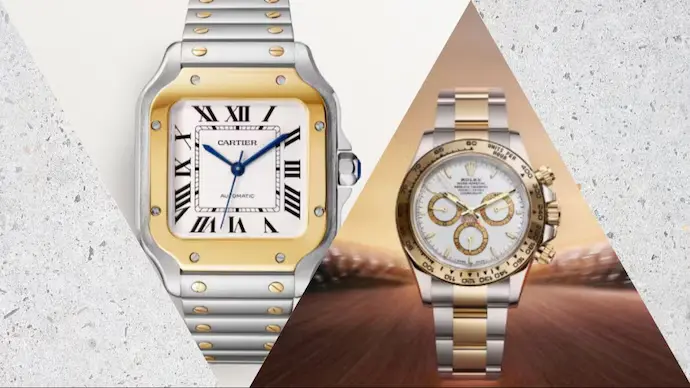H&M, short for Hennes & Mauritz, has become one of the world’s most popular fast-fashion brands, offering trendy, affordable clothing for women, men, teenagers, and children. With a mission to make high-fashion accessible to everyone, H&M has consistently pushed boundaries by introducing collaborations with top designers, using sustainable materials, and embracing a customer-centric approach to fashion.
This article will explore H&M’s rise to prominence, its impact on the fashion industry, and how it has managed to stay relevant in an ever-evolving market.
You May Also Like: Where to Sell Secondhand Clothing: A Comprehensive Guide for the USA
A Brief History of H&M
H&M’s journey began in 1947 when Erling Persson opened a women’s clothing store in Västerås, Sweden, called Hennes (Swedish for “hers”). Persson’s vision was to create a store that provided high-quality clothing at affordable prices. In 1968, the company expanded into menswear after acquiring Mauritz Widforss, a hunting and fishing equipment store, which led to the name change to Hennes & Mauritz, or H&M.
The company grew steadily across Sweden and Europe throughout the 1970s and 1980s, offering a wide range of apparel. By the 1990s, H&M had entered the international market, establishing stores in the U.S., Asia, and beyond. Today, H&M boasts over 5,000 stores worldwide, making it a leader in the fast-fashion industry.
What Sets H&M Apart?
H&M’s success can be attributed to several key factors that differentiate the brand from its competitors:
1. Affordable Fashion for All
H&M’s core philosophy revolves around providing stylish clothing at affordable prices. The brand makes runway-inspired fashion accessible to a global audience, ensuring that customers can stay on-trend without breaking the bank. This strategy appeals to a wide demographic, from students looking for budget-friendly clothes to professionals seeking affordable office attire.
By offering a diverse range of clothing, shoes, and accessories for men, women, and children, H&M has positioned itself as a one-stop-shop for the entire family. Its constant flow of new collections ensures that shoppers always have something fresh to choose from, making it a go-to for fashion lovers looking for the latest trends.
2. High-Profile Designer Collaborations
One of the most innovative ways H&M has distinguished itself is through its high-profile designer collaborations. Since 2004, the brand has partnered with some of the biggest names in fashion, including Karl Lagerfeld, Stella McCartney, Versace, Balmain, and Moschino, to create limited-edition collections that are highly anticipated by fashion enthusiasts.
These collaborations are a win-win for both H&M and the designers. Shoppers get access to luxury-inspired fashion at affordable prices, while designers gain exposure to H&M’s vast customer base. These collections often sell out within hours of launching, highlighting the power of these partnerships and the strong demand for accessible luxury.
3. Sustainability Initiatives
In response to growing concerns over the environmental impact of fast fashion, H&M has made significant strides toward sustainability. The company launched its Conscious collection, which features clothing made from organic cotton, recycled polyester, and other sustainable materials. H&M also introduced its Garment Collecting Program, allowing customers to drop off unwanted clothes (from any brand) in-store to be recycled or repurposed.
H&M’s sustainability efforts extend beyond materials and recycling. The company has set ambitious goals to reduce its carbon footprint and is committed to becoming climate-positive by 2040. It also aims to use 100% sustainable or recycled materials by 2030, a move that underscores H&M’s desire to lead the fast-fashion industry in environmental responsibility.
Despite these efforts, H&M has faced criticism for not moving fast enough in its sustainability practices, given the sheer scale of its global operations. However, the brand’s transparency and long-term sustainability goals show that it is taking steps in the right direction.
4. Digital Transformation and E-commerce Growth
As consumer shopping habits have shifted towards online platforms, H&M has embraced digital transformation to stay competitive. The brand’s website and mobile app offer a seamless shopping experience, allowing customers to browse and purchase items from the comfort of their homes.
H&M has also integrated its online and in-store experiences by offering services like click-and-collect, allowing customers to order online and pick up their purchases in-store. The company continues to invest in e-commerce, with plans to expand its online presence further and enhance its digital marketing strategies.
In recent years, H&M has also embraced social media as a powerful tool to connect with customers. With a strong presence on platforms like Instagram, Facebook, and TikTok, the brand engages with its audience through curated content, influencer partnerships, and user-generated content campaigns. This digital-first approach has helped H&M maintain its relevance, particularly among younger shoppers.
The Challenges of Fast Fashion
While H&M has achieved immense success, the brand is not without its challenges. Fast fashion, as an industry, has come under increasing scrutiny for its environmental and social impacts. The rapid production cycles and inexpensive clothing associated with fast fashion often result in waste and overconsumption, contributing to landfill build-up and pollution.
H&M, like other fast-fashion brands, has faced criticism for the working conditions in some of its supply chain factories. Despite efforts to improve transparency and ensure fair wages and conditions, the company continues to be scrutinized by activists and environmentalists.
In response, H&M has ramped up its efforts in sustainability and ethical practices, releasing annual sustainability reports that outline its progress. The company has also committed to reducing waste and increasing the use of recycled and organic materials, while partnering with organizations that promote fair labor standards.
The Future of H&M: Innovation and Adaptability
As H&M looks to the future, it’s clear that the brand’s focus will be on adapting to changing consumer demands, embracing technology, and continuing its sustainability journey. With competition from both online retailers and smaller, independent brands, H&M will need to innovate to stay ahead.
1. Emphasis on Sustainability and Circular Fashion
H&M’s future will likely be defined by its sustainability efforts. Circular fashion, a concept where clothing is designed and produced with recycling and repurposing in mind, will play a pivotal role in the brand’s evolution. By extending the life of its garments and reducing waste, H&M hopes to create a more sustainable fashion ecosystem.
2. Personalization and Customer Engagement
As consumers increasingly expect personalized shopping experiences, H&M is exploring ways to tailor its offerings to individual preferences. This includes leveraging data analytics to offer personalized recommendations, creating custom shopping experiences, and improving customer service through AI-powered chatbots and virtual assistants.
3. Collaborations and Innovation in Fashion Tech
H&M’s designer collaborations are here to stay, and the brand is also exploring new technologies like 3D printing and smart textiles. These innovations could revolutionize the way H&M designs and produces its clothing, making the brand a leader in fashion tech.
Conclusion: H&M’s Lasting Impact on Fashion
H&M has cemented its place as a global leader in fast fashion by offering affordable, trendy clothing that appeals to a wide audience. Through innovative designer collaborations, digital growth, and a strong commitment to sustainability, H&M continues to evolve in an industry that is constantly changing. While it faces challenges related to fast fashion’s environmental impact, the brand’s focus on circular fashion and ethical practices positions it to shape the future of the fashion world.
For American consumers looking for stylish and affordable clothing, H&M remains a top destination, thanks to its blend of innovation, fashion-forward designs, and a growing commitment to doing better for the planet.










